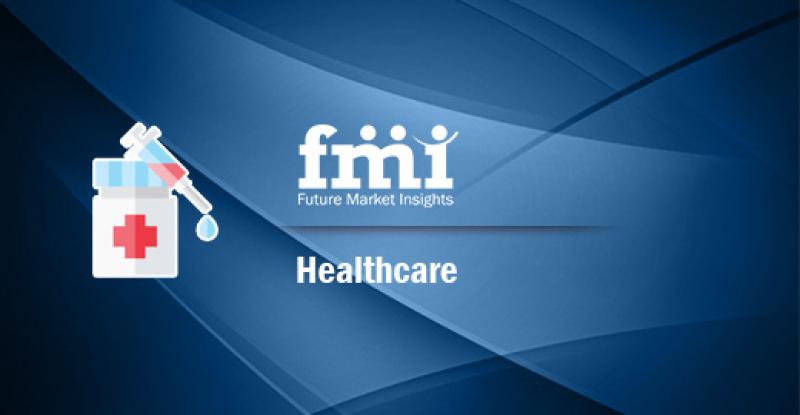Rabies Diagnostics Market is expected to register a healthy CAGR during the forecast period.
Tough WHO Stance to Solidify Rabies Diagnostics Landscape
The World Health Organization (WHO), in April 2018, published a fresh set of rabies guidelines and recommendations covering key facets including rabies elimination, control, and prevention. As per WHO, despite being a preventable disease, rabies kills nearly 59,000 people, annually. The new set of guidelines are anticipated to provide regions struggling with high number of rabies cases, with hands-on guide to eliminate rabies.
Key updates focused at rabies elimination, includes, robust surveillance strategies and suitable rabies diagnostics, recommendations on immunization—human and animal, palliative care in developing, low-income economies. Moreover, in its recent paper position of 2018, the international public health regulatory body, takes a tough call on rabies vaccines, replacing its 2010 position paper. The position paper elaborates in the novel advancements in the field of rabies diagnostics, with a focus on programmatic viabilities, simplified vaccination programs, and cost-effectiveness of rabies diagnostics. WHO recommends pre-exposure prophylaxis (PrEP) and post-exposure prophylaxis (PEP) as the two new immunization strategies.
Request Sample Report @ https://www.futuremarketinsights.com/reports/sample/rep-gb-7770
Apart from such programs, other key growth drivers include:
- Veterinaries are increasingly approving point-of-care rabies diagnostic solutions
- Increased willingness and focus of pet owners ensure the overall health and pay for animal health services—directly or through either various pet insurance programs
- Increased novel innovations in rabies diagnostic solutions
Rabies Elimination Programs in Developing, Low-Resource Countries to Push Revenue in Global Rabies Diagnostics Market
Of the 59,000 reported rabies-related deaths, globally, most of them are reported from the low-income settings—with India reporting the highest number of such deaths. As per Association for the Prevention and Control of Rabies in India’s (APCRI) 2018 journal, India accounts for nearly 36 percent of worldwide rabies deaths, with the nation reporting nearly 20,000 deaths, annually. The country is also said to have the maximum number of stray dogs, compared to any other country, further driving the demand for rabies diagnostics. Moreover, Kenya’s efforts to eliminate rabies by 2030, includes, mass dog vaccinations, provision of post-exposure prophylaxis (PEP), public awareness, improved surveillance, and quick response to rabies outbreak. Several Asian countries have adopted Intradermal regimes. Such instances has prompted companies and global health regulatory bodies to invest in the research and development of effective rabies diagnostic tools. However, high cost of PEP to governments is anticipated to disrupt the supply chain and challenge its availability, thereby translating into increased risks and higher out-of-pocket payments.
Rabies Diagnostics Market to Witness Novel Treatment Innovations by Key Players
The Center for Disease Control and Prevention (CDC) recently launched a new rabies test, for a more superior diagnoses of rabies. The newly launched LN34 pan-lyssavirus real-time polymerase chain reaction (PCR) assay (LN34) showcased a higher diagnostic capability compared to the current standard direct fluorescent antibody (DFA) test. The LN34 is said to be much more robust and reliable versus the standard rabies diagnostics tests, and also replace DFA to become the most preferred test for rabies diagnosis. Moreover, the new LN34 does not require any specialized training or lab set-ups and can be used in a variety of settings. Additionally, LN34 has said to take-off the economic burden and lessen the treatment regime. Development of such advancement rabies diagnostic tools could result in a shift the epidemiology of rabies—resulting in a more superior rabies identification and treatment protocol, thereby, reducing further rabies-related mortality rates. Additionally, Nacimbio and Lomonosov MSU are planning to together conduct research programs to develop innovative immunobiological drugs for rabies. Other key players, making advancements in the rabies diagnostics market include, Merck KGaA, Bio-Rad Laboratories, Inc, Aviva Systems Biology Corporation, and Abbexa Ltd among others.
Segmentation of the Global Rabies Diagnostics Market
The report on Rabies Diagnostics Market, broadly classifies the market in the basis of end user:
- Hospitals.
- Diagnostic centers.
- Cancer Palliative care clinics.
- Pharmacies.
Request to View TOC @ https://www.futuremarketinsights.com/toc/rep-gb-7770
The report onRabies Diagnostics Marketalso offers an elaborate regional analysis, including market opportunities and competitive scenario in each region:
- North America Rabies Diagnostics Market(U.S., Canada)
- Latin America Rabies Diagnostics Market(Mexico, Brazil, Rest of Latin America)
- Western Europe Rabies Diagnostics Market(France, Germany, Italy, Spain, U.K.)
- Eastern Europe Rabies Diagnostics Market(Poland, Russia)
- Japan Rabies Diagnostics Market
- Asia Pacific excluding Japan Rabies Diagnostics Market(India, China, ASEAN, New Zealand, Australia)
- Middle East and Africa Rabies Diagnostics Market(N. Africa, S. Africa, GCC countries, Rest of MEA)
